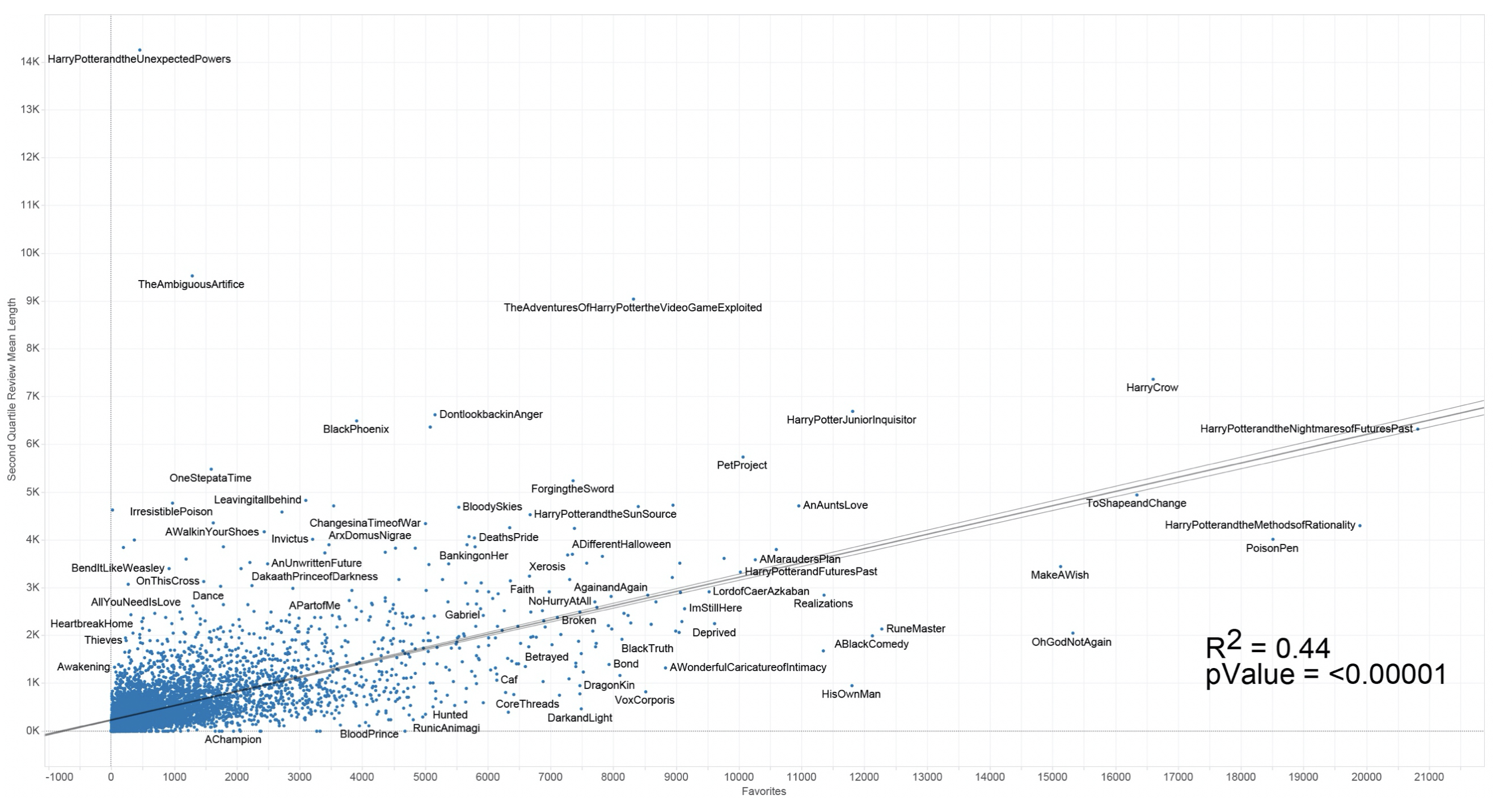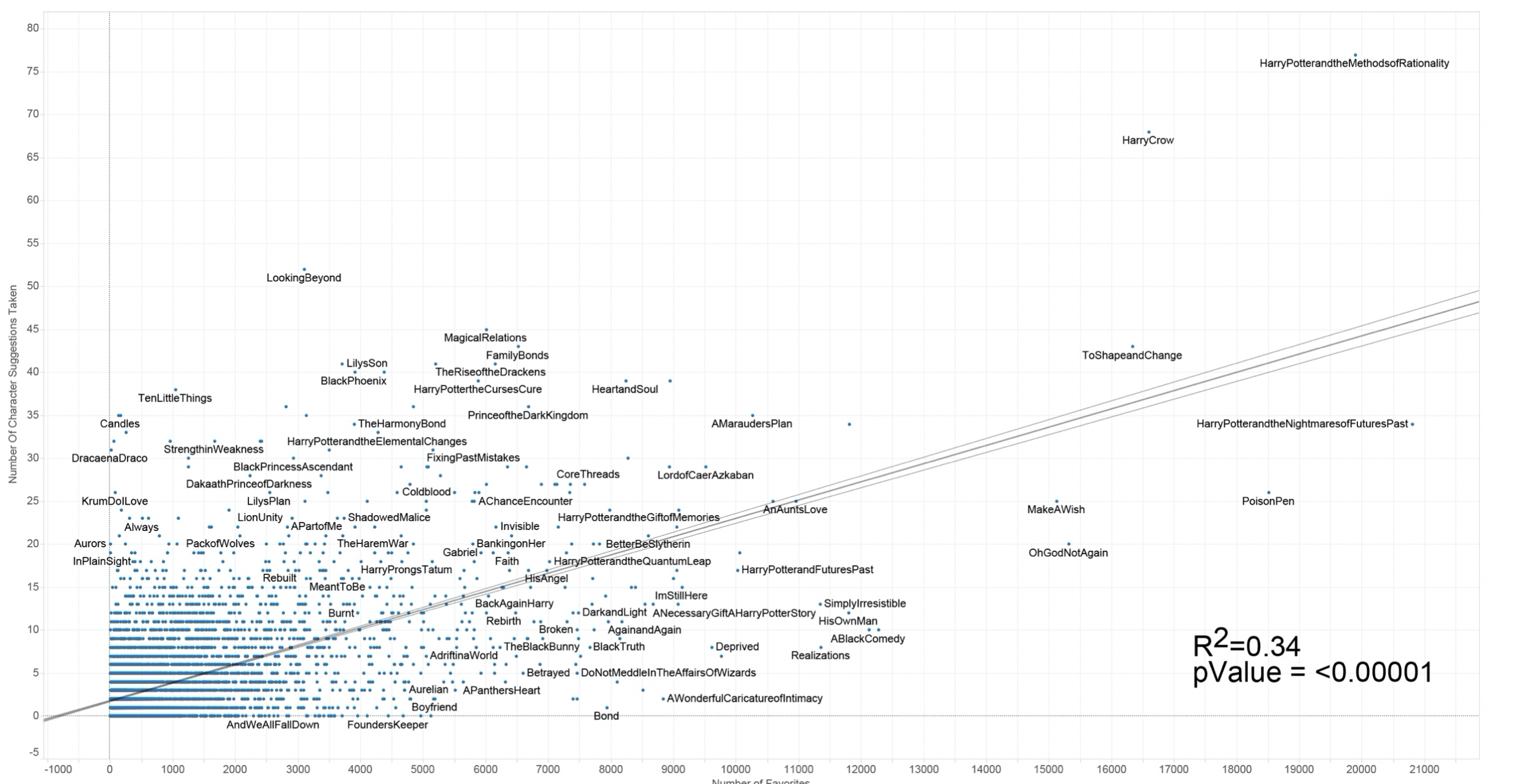1. Abstract
Fiction does not exist in a vacuum: texts are the locus of a complex negotiation between authors, publishers, readers, and critics. This is particularly the case for serialized fiction: when authors publish a narrative over a series of installments, they open space for a feedback loop with readers. Engaged in an interactive community, invested readers become what Frank Kelleter calls “agents of narrative continuation.”[1] The challenge for contemporary researchers is to reconstruct those communities in the absence of concrete material evidence.[2]
Current fan fiction communities can help us make sense of these complex relationships. Given their high publishing volume, as well as the opportunities for commenting, liking and following that the digital platform affords, fan fiction environments, offer unprecedented opportunities to study the relationship between authors and readers in serially published fiction.[3] Fan fiction communities value engagement: texts are often posted by chapter, and commented upon before the text is finished. As such, we can use these archives to explore the author/reader relationship.[4]
Our project asks two questions. First, what aspects of reader engagement can predict success for a text? And, in the context of specific stories, how are authors influenced by reader suggestions for content inclusion?
Corpus
For our corpus, we focus on the Harry Potter fan fiction community on fanfiction.net. By limiting our corpus, we control for different kinds of community-based interactions as well as subject and character. As our project is interested in serial publication of novel-length fiction, we acquired all Harry Potter fan fictions over 60,000 words in length, as well as all comments. Our final corpus consists of 16,454 texts with 1.8 billion words. Each chapter is associated with its full metadata, and with the text of its reviews.
Reader Feedback and Success
The fan fiction metadata offers quantitative measures of success to explore in relation to reader engagement. Readers mark stories as “favorites,” providing positive feedback to authors and other readers. Using favorites as a measure of success, we discover that they are highly correlated to the total length of reviews written about the book (0.695). Furthermore, we divided all of the reviews, by chapter, into quartiles. Surprisingly, the most predictive reviews of future success of the text are long reviews posted in response to chapters in the second quartile of the total text length (figure 1).
 Figure 1: Regression of mean review length in second quartile on number of favorites
Figure 1: Regression of mean review length in second quartile on number of favorites
These findings indicate that the second quartile is perhaps the most important for securing reader interest (readers, unsure if the text will be completed, are likely less invested in the first quartile).
All of our results indicate a close reciprocal relationship between authors and readers in the fan fiction community. Moreover, by tracking the appearance of names in reviews that predate their appearance in the text, we argue that we have identified a proxy measurement for reader influence. In our full presentation, we not only show our results in far more detail, but we also explore the causal relationships between reader feedback and author response.
Reader Influence
Fan fiction is deeply invested in characters. A topic model run on the corpus returns a model wherein 78 out of 150 topics are predominately character names. Though fan fiction authors work with a fixed set of canonical characters, they make choices on which of those characters to include. We posit that when a character name appears first in the reviews, before it appears in the text, it may indicate that the author was prompted by the review, rather than the original novels. Restricting our model to character names that appeared more than two chapters later in the text (in order to account for false positives), more than 55% of stories contained at least one instance of a character name appearing first in the reviews, with an average 10-chapter delay between suggestion and uptake. Our data indicates that this is highly correlated with the success of the stories: texts in which the author appears to incorporate at least one character-name suggestion from a review has a higher probability of receiving more favorites (figure 2). Based on these results, the fan fiction community appears to be far more interactive than we had hypothesized: authors reliably achieve more success when overtly including suggestions from readers.
 Figure 2: Regression of number of character suggestions taken on number of favorites
Figure 2: Regression of number of character suggestions taken on number of favorites
All of our results indicate a close reciprocal relationship between authors and readers in the fan fiction community. Moreover, by tracking the appearance of names in reviews that predate their appearance in the text, we argue that we have identified a proxy measurement for reader influence. In our full presentation, we not only show our results in far more detail, but we also explore the causal relationships between reader feedback and author response.
[1] Kelleter 2017, 13
[2] Studies in serial publication have largely taken a book historical approach, such as in Bonnell 2008, or Sigler 2008.
[3] Other DH studies have made use of fan fiction to research pedagogy (Black 2009), the expansion of Digital Humanities (Nicolaescu and Mihai 2014), and stylometry (Koolen 2018).
[4] See Milli and Bamman (2016) who also explore reader reactions to literature by predicting reader sentiment in response to text portions. Our interest diverges in that we are interested in the author’s uptake of these reactions.